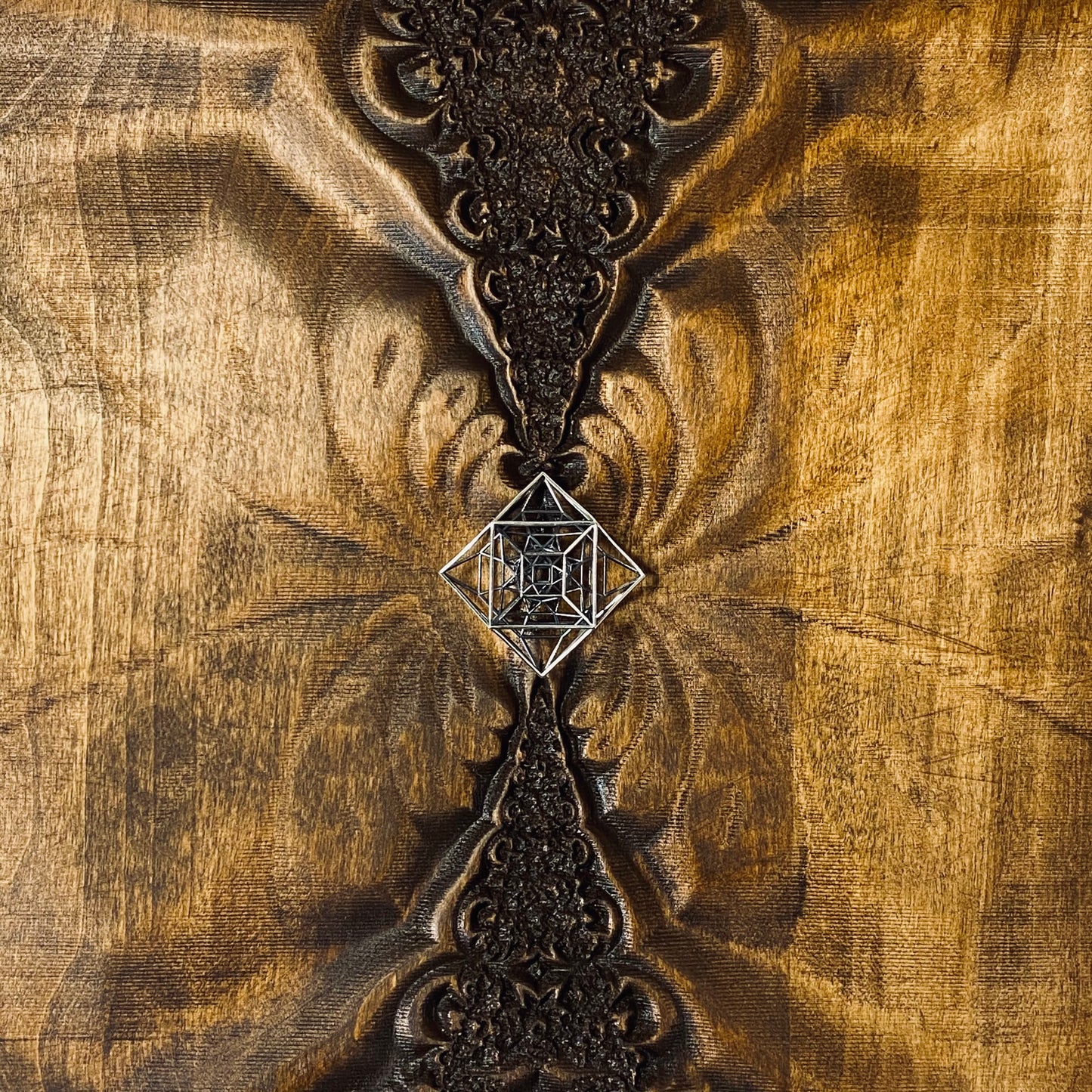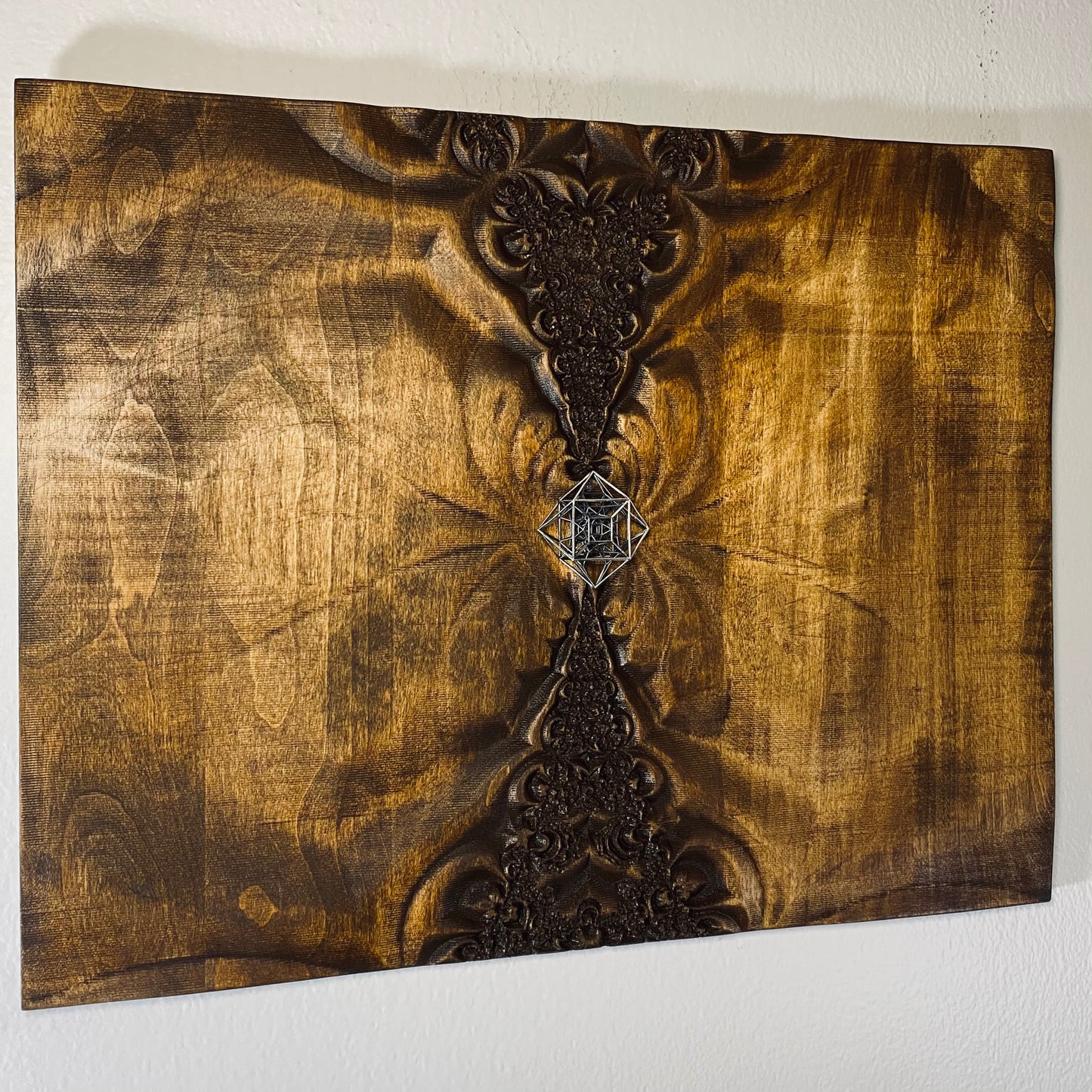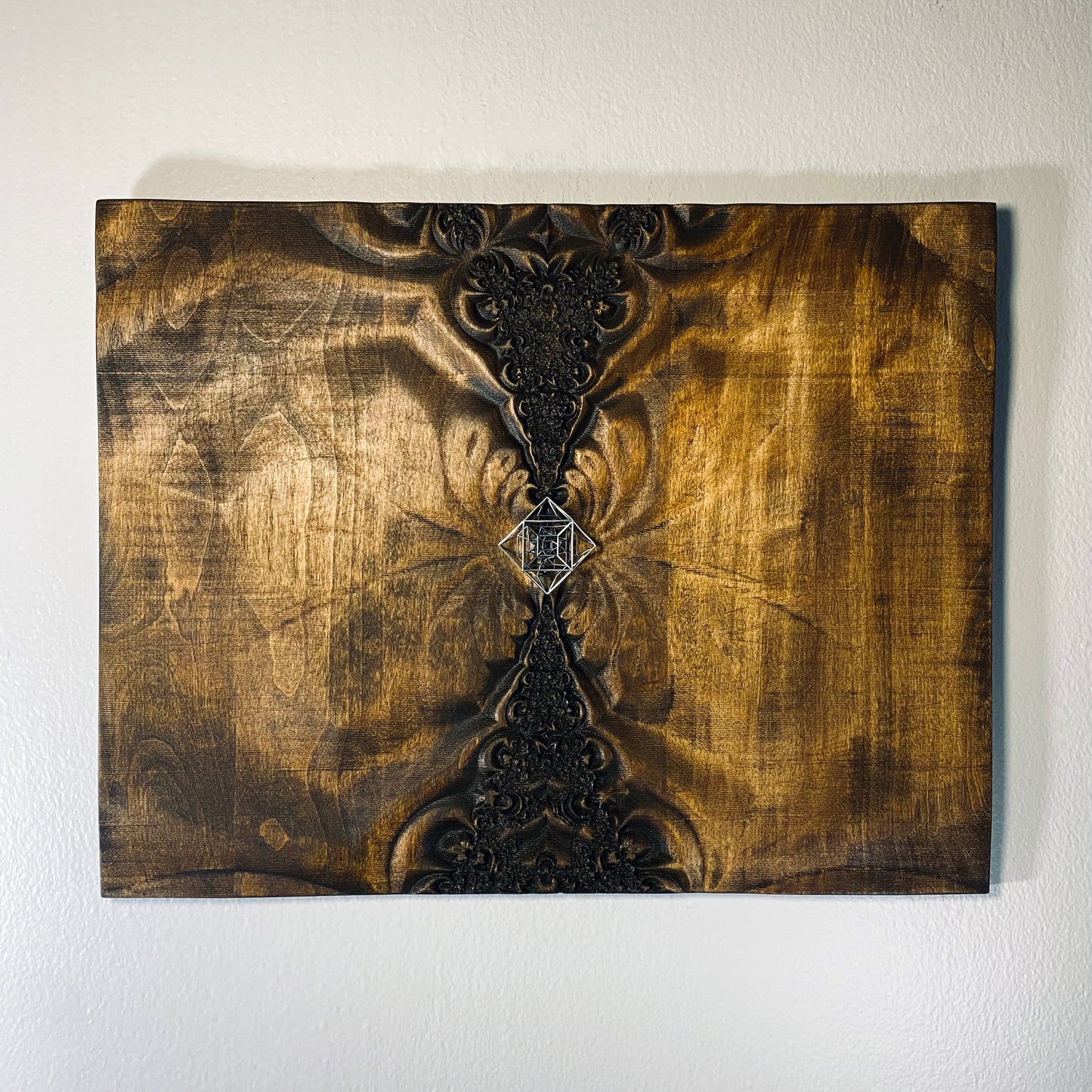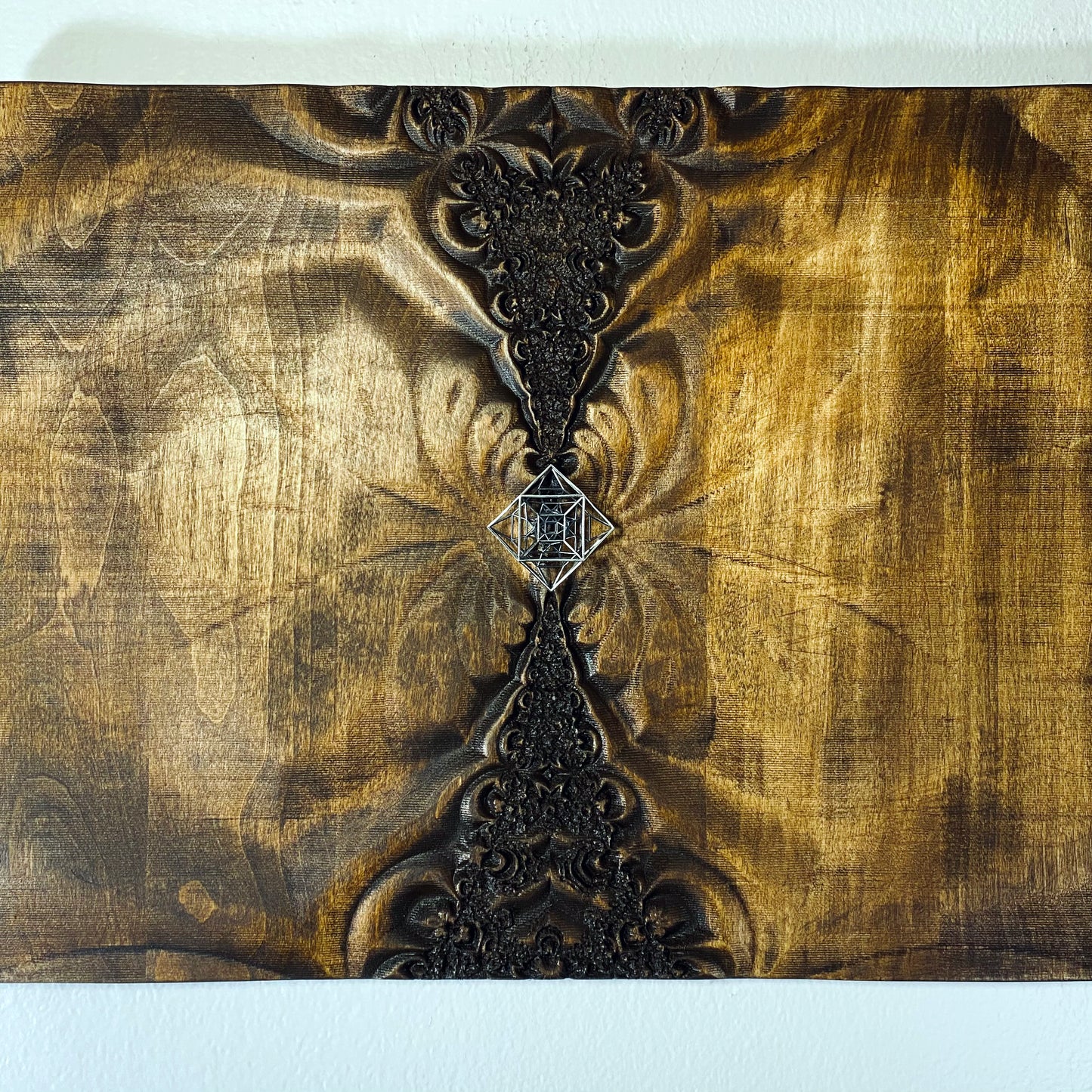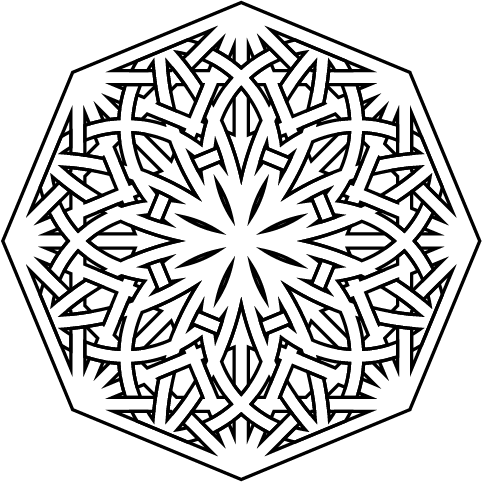Pardesco
Jiva
Jiva
Couldn't load pickup availability
This piece started with a question: what would happen if I combined fractal mathematics with four-dimensional geometry, then made it physical? The answer is Jiva—a wood fractal carving with a hand-fabricated sterling silver polytope suspended at its center.
I designed the fractal pattern using algorithmic tools, creating those flowing organic tendrils that seem to spiral endlessly inward. The wood was laser-etched, then finished with gel stain to bring out depth in the grain. But the fractal alone felt incomplete—it needed something to anchor it, something that existed in a different dimensional space entirely.
That's where the polytope comes in. This isn't just decorative metalwork—it's a precise mathematical sculpture called a rectified icositetrachoron, a shadow of a four-dimensional object projected into our three-dimensional world. I fabricated it by hand from 925 sterling silver: 288 individual edges, 96 vertices, each joint soldered with jeweler's precision.
The name "Jiva" comes from Sanskrit, meaning "life force" or "living soul"—the idea that everything connects through invisible mathematical relationships, whether fractals repeating infinitely or dimensions we can't perceive directly.
The 4D Polytope Sculpture

Wireframe projection of the rectified icositetrachoron: 288 edges, 96 vertices existing in four-dimensional space
What you see suspended in the center is a three-dimensional shadow of a four-dimensional object. Just as a cube casts a two-dimensional square shadow on a wall, this polytope is the shadow cast by a rectified icositetrachoron—a geometric form that exists only in 4D space.
Fabricating this required translating mathematical coordinates into physical reality: cutting, bending, and soldering 288 individual silver segments into precise positions. Each vertex represents a point in dimensional space we can't directly perceive, but can understand through mathematics and visualize through craft.
Learn more about four-dimensional geometry and how these structures work in our guide to 4D shapes.
The Fractal Wood Carving

Algorithmic fractal design—patterns that repeat infinitely at every scale
The wood background isn't decorative—it's a mathematically generated fractal pattern, created through iterative algorithms where each element contains smaller versions of itself, continuing theoretically to infinity. I designed this specific pattern, then used precision laser etching to carve it into hardwood before applying gel stain to emphasize the dimensional quality.
Fractals appear throughout nature—coastlines, tree branches, river networks—because they're efficient solutions to distribution problems. Using them here creates visual resonance with the polytope's geometric precision, two different mathematical languages in conversation.
Explore the mathematics behind fractal art in our introduction to algorithmic design.
Certificate of Authenticity: This is an original, one-of-a-kind artwork. Each Pardesco piece is signed, dated, and comes with documentation of materials and process.
Share
